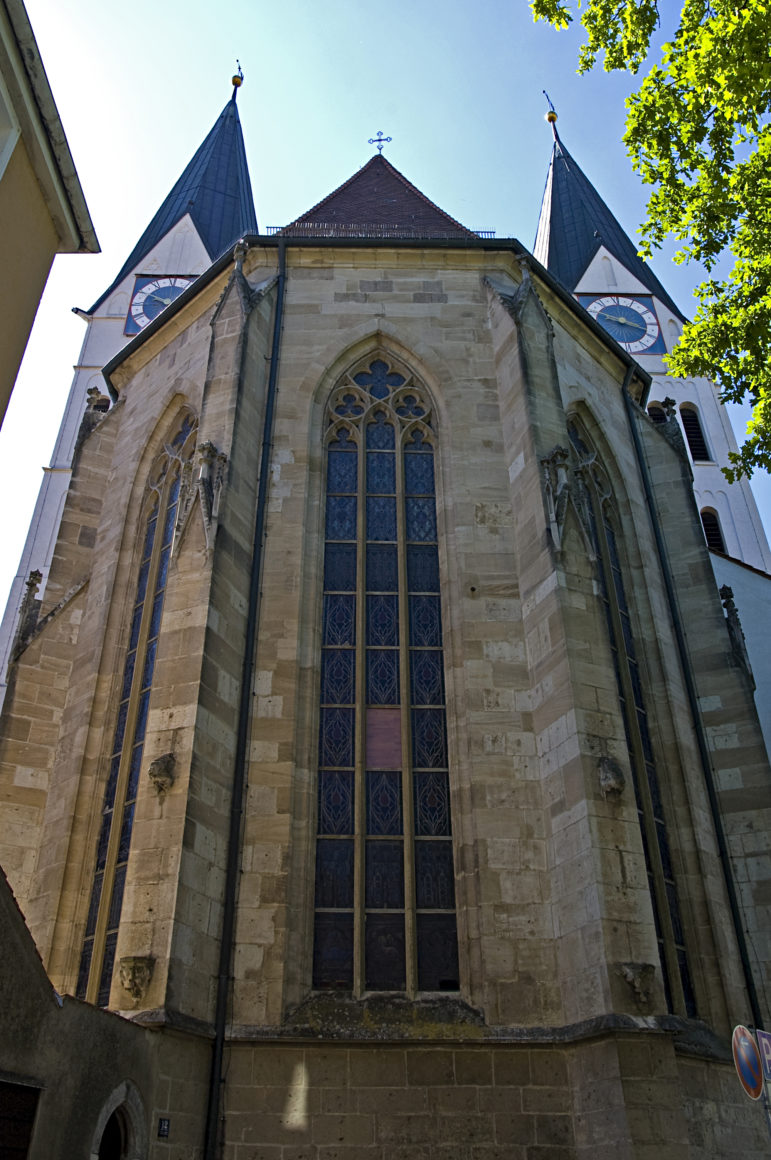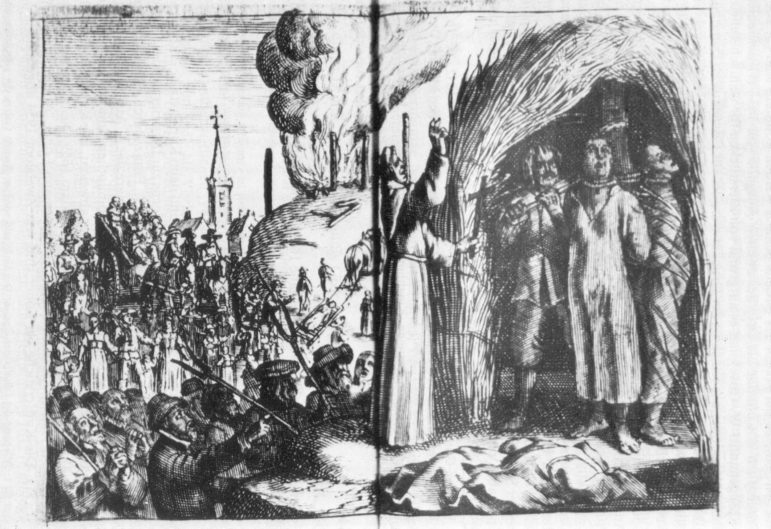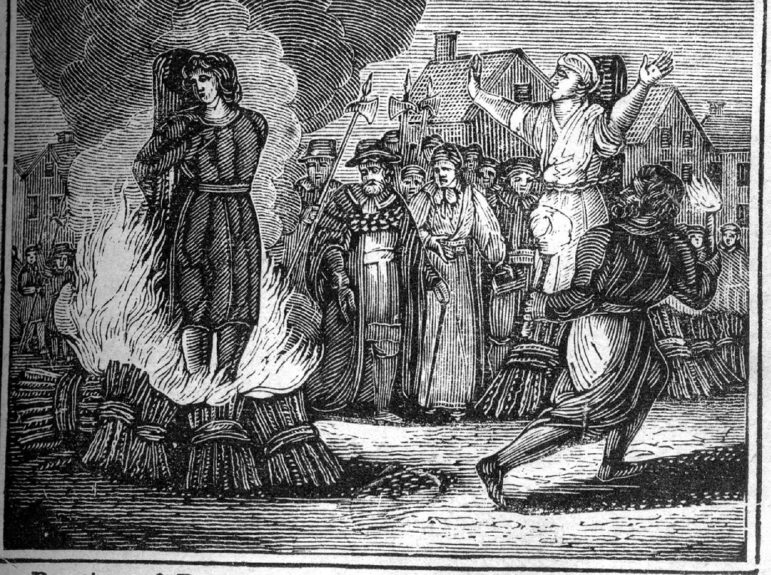Warning: This article contains sections that describe acts of violence.
EICHSTÄTT, Germany– A local Catholic dioceses in Germany has described the persecution of 400 innocent people who were tortured and executed as witches as a “bleeding wound in the history of our church.”

Eichstätt Cathedral – Image credit: München, Bavaria – Dom zu Eichstätt, Uploaded by WaldiWuff, CC BY 2.0
The comments came from Bishop Gregor Maria Hanke who also promised to place a memorial plaque within the Eichstätt Cathedral, formally known as the Cathedral Church of the Blessed Virgin Mary, St. Willibald and St. Salvator.
The statement from the bishop comes after nearly a decade of activism on behalf of those who perished during the witch trials 400 years ago. The Franconian Hochstift Eichstätt region was one major center of persecution.
On July 18, 1620, Kunigunde Sterzl was beheaded after weeks of interrogation and three days of torture. Three other women were murdered alongside Sterzl. All four proclaimed their innocence and begged for mercy.
In 2005, Heinrich Stürzl was “suddenly struck with a genealogy bug” and dug deep into his family history. After years of work, he found his oldest confirmed ancestor, a farmer named Aegidius Sterzl.
But Stürzl wanted to go further back and hunted through the state archives in Nuremberg and there, in 2012, he found Kunigunde Sterzl. He told Eichsättter Kurier that he never expected what he learned next. He found a trail of documents and discovered he was the direct descendent of Sterzl.
“Of course everyone knows that the witch hunts happened, but when it comes to one’s own ancestors, even if the events were 400 years ago, everything suddenly takes on a different intensity, the fate of then a name that from now on forever with our family will be connected.”
Kunigunde Sterzl was 76 years old when she was arrested. “It was a terrible time, the fear of witches, which was spread among the people, was great,” Stürzl said. But it was not just a fear of witches that fomented the craze. Prince-Bishop Johann Christoph von Westerstetten approved of the persecution of individuals who had been scapegoated as witches for anything from an early frost to soured milk.
The witch trials of Eichstätt would continue over 150 years in what might be considered a partnership of persecution between the secular courts and Catholic diocese. The last two known victims were Balthasar Gorck, a 15-year-old boy, who was sentenced to death for witchcraft in 1705. The last known execution victim in Eichstätt was Walburga Rung, a 22-year-old woman, on November 22, 1723.

Witch burning – Public Domain
In 2011, the year prior to Sturzl’s discovery of his family history, a retired Protestant pastor and author Hartmut Hegeler began a campaign to rehabilitate victims of witch hunts across Europe. Hegeler understands his work as the continuation of the work of 17th Century Calvinist pastor, Anton Praetorious, who railed against witch-hunts, witch trials, and torture.
Hegeler told The Times that “The Church was scared of the Reformation and the witch trials were a means to combat it.” He added, “Anyone turning their back on the Catholic faith was labeled as being in league with the devil. It worked.”
In 2018, Stürzl participated in a symposium titled, “Witch persecution in the diocese of Eichstätt.” He was hoping for an interdisciplinary panel to be appointed to study the witch trials extensively as well as a process to commemorate the tragedy and absolve the victims. Bishop Hanke was there as well.
The witch trials of Eichstätt are known but had been largely ignored. Unlike other cities, like Salem in the U.S., Eichstätt has never seized on this part of its history to educate the future about the witch trials and their dangers.
Das Jurahaus museum then took up the subject and demanded that the city remember the names of the victims and held a seminar titled, “Bonschab – a name on death?” with Munich-based artist Wolfram P. Kastner, and journalist and author Claub-Peter Lieckfeld.
The seminar focused on Ursula Bonschab was a wealthy innkeeper and wife of the Eichstatt mayor. She was arrested and tortured. She confessed to “weather magic,” exhuming the bodies of deceased children, and sexual relations with the devil. She was beheaded and burned at the stake. Her assets were distributed to the church.
“It was painful for us to transcribe it,” Kastner told the Eichstätt Kurier as they read the interrogation accounts of how the 36-year-old Bonschab was “systematically mentally and physically” abused, robbed of her property, tortured for two months, and then killed in her prime. The documents have been published online.
Kastner became instrumental in getting the diocese to reflect on its past and ultimately acknowledged their involvement. In his letter to Bishop Hanke in 2017 he wrote of the opportunity noting that history can say that “Eichstätt is also the place where the work of mourning and remembrance was positively moved forward.”
Many Germans have shifted away from both Catholicism and Protestantism. In 2019, Pope Francis urged greater evangelism because of a “growing erosion and deterioration of faith.” Nevertheless, the Catholic Church in Bavaria remains powerful.
“When we did the exhibition 3,000 people came to see it but not the bishop, the mayor, or the university professors,” Kastner said. “One teacher came with her mother and then signed our petition but she returned after an hour and asked us to delete her signature because she was afraid of losing her job.”

19th Century woodcut, artist unknown – Image credit: Robert Benner (Mullica), CC BY 2.0
Many citizens have been supportive of Kastner’s work. Gabriele Kühner wrote:
I am so grateful to you for this exhibition about the witch burnings in Eichstätt! Awareness of history is so important here. And the denunciations are far from over. I myself was defamed as a “witch” and totally ostracized by a member of Eichstätter University because of my critical attitude towards the church.
As a humanist feminist, I dared to look behind the facade and to publish on it. They tried to stop my criticism and muzzle me. I’m still Catholic myself, but non-practicing and so they expect submission and contriteness rather than protest and criticism.
Religious fundamentalists are still at work subtely intimidating people today. Modern “witch burnings” do not take place at the stake, but in the media via negative propaganda. If you are looking for fair treatment here, you will be completely ignored. This envrionment has learned nothing from its past. Misogyny and misanthropy continue here to the detriment of others. It is very hypocritical of the church.
I thank you for your courage!
For his part, Bishop Hanke has urged greater engagement with the subject of the witch trials. A new plaque has been installed in the cathedral commemorating the victims.
But Kastern is not satisfied. He said to The Times, “It’s good that they’ve done something but of course it’s not nearly enough.”
Das Jurhaus Museum will be presenting a new exhibition called “BischofsMacht und HexenMord”: Episcopal power and witch murders.
Editorial Note: This article refers to individuals accused of witchcraft who are victims of persecution and violence. The accused individuals were not practitioners of any modern Pagan religion. TWH uses upper case to denote practitioners of Witchcraft or self-identify as Witches.
The Wild Hunt is not responsible for links to external content.
To join a conversation on this post:
Visit our The Wild Hunt subreddit! Point your favorite browser to https://www.reddit.com/r/The_Wild_Hunt_News/, then click “JOIN”. Make sure to click the bell, too, to be notified of new articles posted to our subreddit.

Pingback: A Druid’s Web Log – a time to hibernate like the bears – January 2021 – Ellen Evert Hopman